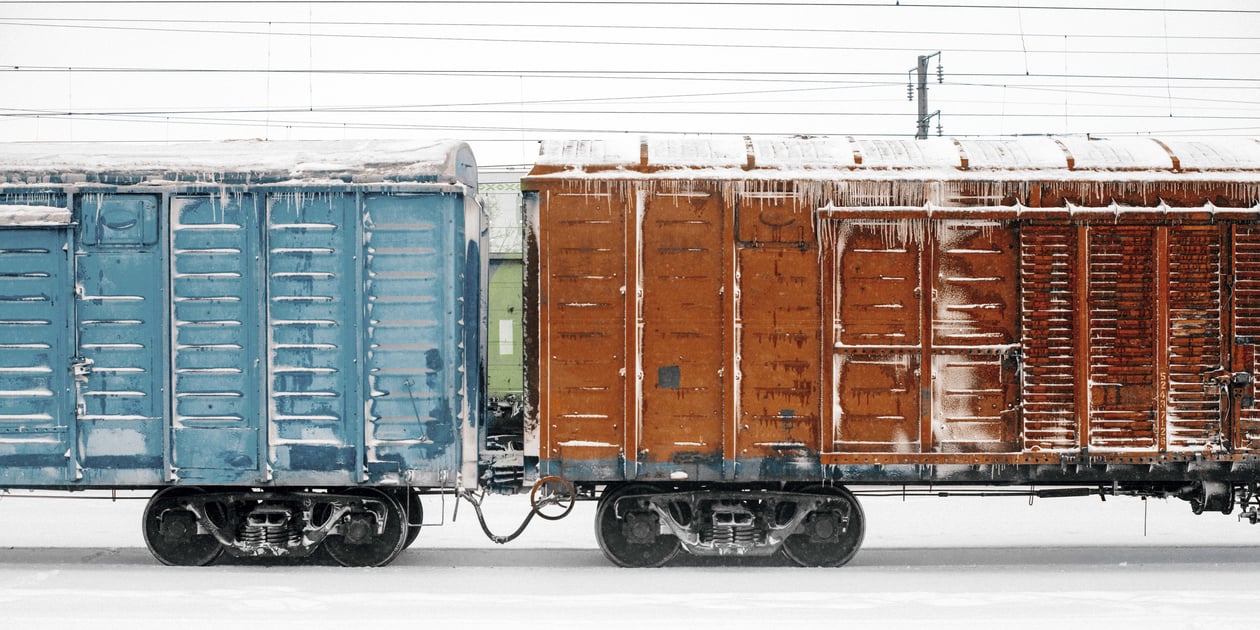Chilly temperatures are the norm in much of North America when December rolls around, and for shippers, that change in weather means an added challenge for some goods: How to protect freight from freezing. Goods that can be affected include the obvious - beverages like soda, juice, beer and other liquids can expand, and cause packaging to burst. But also affected are the the not so obvious dry items like coffee, makeup, and batteries - all of which can suffer damage that makes them unusable. While that prospect sounds scary, proper planning can protect freight from freezing this winter whether you're shipping full truckload, LTL (less than truckload), or intermodal.
How do I protect loads from freezing?
The steps to protect loads from freezing begin in the planning phase. First of all, know the items being shipped. While a variety of items can be damaged by freezing, not everything freezes at the same temperature. For instance within the liquid realm, soda and water start to freeze at the traditional freezing point of 32° Fahrenheit. However beverages like beer and wine offer an additional 5-10 degrees of wiggle room depending on their alcohol content.
.jpeg?width=315&name=AdobeStock_268089693%20(1).jpeg) As noted above, if any of these liquid products freeze, they expand, and that may cause their glass, plastic, or aluminum containers to explode. Not an ideal outcome. Batteries can survive cold temperatures, but they may also burst under certain conditions if moisture enters the fray. Regardless, it's important to know what the temperature requirements are, and not to mix items with different ones (unless that's part of your plan already).
As noted above, if any of these liquid products freeze, they expand, and that may cause their glass, plastic, or aluminum containers to explode. Not an ideal outcome. Batteries can survive cold temperatures, but they may also burst under certain conditions if moisture enters the fray. Regardless, it's important to know what the temperature requirements are, and not to mix items with different ones (unless that's part of your plan already).
Speaking of a plan, having one is a key component of the temperature-sensitive shipping process. In the winter, consider the route. Obviously, some areas are more prone to sustained freezing temperatures and wintry weather than others. That means avoiding those hot (or in this case cold) zones when possible and adjusting routes when storm systems are coming through. Of course, if your origin and/or destination are in such an area or you're using intermodal transport, adjusting routes isn't always possible. That means another key is ensuring loads don't sit in the freezing weather and are kept moving.
Whatever the load, the next step is preparing it for shipment. One of the more simple preparation measures is the use of cargo blankets or pallet covers - or anything else that may insulate the load to provide an added layer of protection. Additionally, monitor the temperature of the cargo with smart thermometers on the pallets themselves, alerting to the potential need to make an adjustment during shipping.
Many of the prior-mentioned elements become unnecessary if you're able to secure temperature-controlled transport, like refrigerated or heated dry van containers - applicable for both truckload and intermodal transportation. While the advantages of the heated trailer are obvious when it's cold outside, some may not realize that a refrigerated container (aka a reefer) can do the trick too - as it's still temperature-controlled, even in the winter. On top of these, to avoid problems with a load sitting idle in the cold for an extended period, containers may be stored in a heated warehouse or other protected area while awaiting their next move. These tips are all made simpler when working with a logistics and/or freight provider.
What is freeze protect in shipping?
Freeze protect - or protect from freeze (PFF) or freeze protection (depending on wording) - is a service offered by many freight carriers to ensure loads do not freeze. Carriers take steps like temperature-controlled containers, fast transport, storing loads in temperature-controlled environments, covering pallets with added insulation, space heaters, route planning, temperature monitoring, and more. In other words, most of the steps outlined above are covered. This puts the onus on the freight provider to ensure loads are not exposed to - and thus not damaged by - freezing temperatures - often making the freight provider liable if loads do suffer damage.
Short of a branded solution like this, simply communicating needs to freight providers makes a difference. Let them know what the minimum temperature requirements are for your load. Request insulation, temperature-controlled transport, certain routes, expedited service, etc., and detail those requests in your bill of lading (BoL). All that sound complicated? Read on...
Winter Is Coming
You can't control the weather this winter. But you can control who you work with to keep your valuable freight from freezing. A third party logistics provider (3PL) can help. If your company needs assistance ensuring freight loads reach their destination without turning into popsicles (or exploding), whether you're looking for truckload or intermodal service, let us know. We're happy to touch base and see if we can use our expertise and connections in freight and logistics to help beat the freeze. Molson Coors would say we can.
For more about InTek Freight & Logistics - and the industry in general, go to our Learning Center or visit the highlighted pages below. If you're interested in working with us, hit the Talk to Us button and we'll be happy to get in touch to discuss your freight needs.



